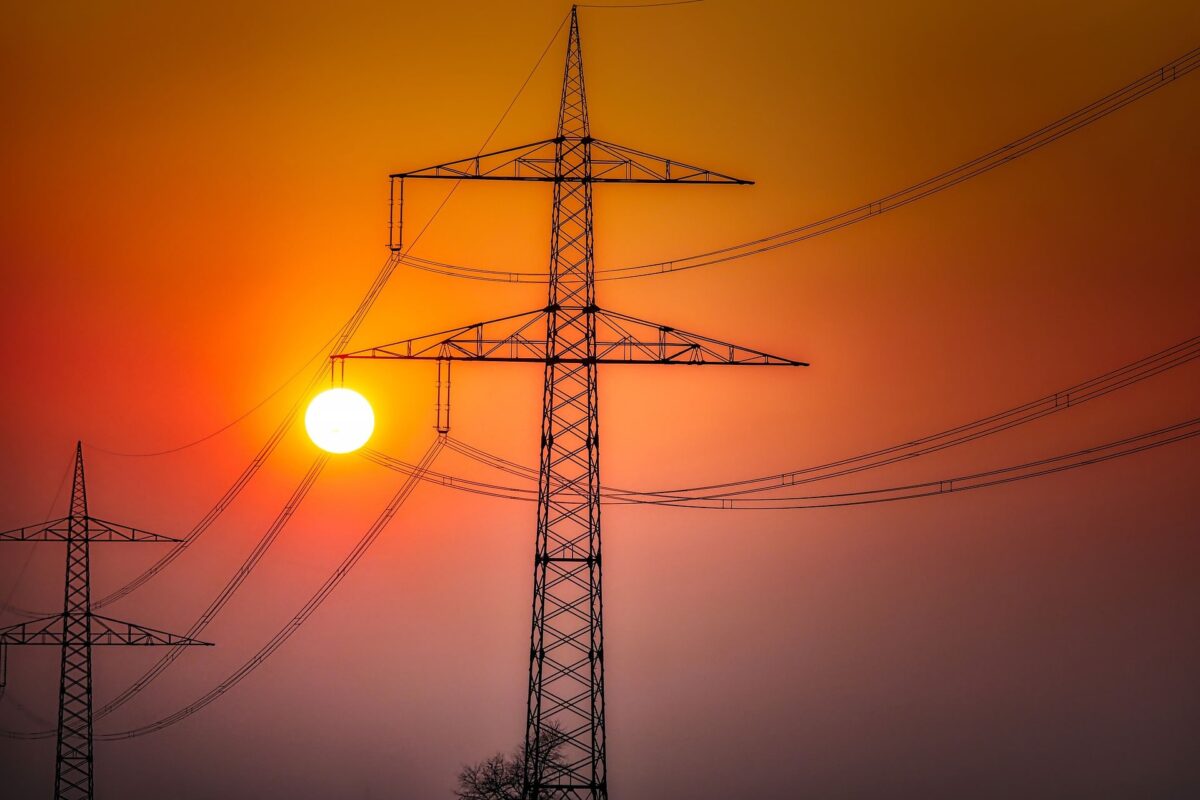At 9 am on Tuesday morning, one of the most important issues in the industry was being debated in a conference room as part of the Intersolar North America trade show: net metering.
Across the nation, net metering policies are changing. The largest solar market, California, has moved to a successor policy, while other states including Hawaii and Indiana have shut the policy down entirely.
But looking beyond the more severe instances, an exploration of different states shows a definite shift in the direction of policies that attempt to put a more precise value on the electricity exported to the grid by distributed solar, along with a move to time-of-use rates. And more often than not the shift is more incremental than a step-change.
The assembled experts attempted to grapple with these big-picture issues, fragmented as they are in the individual experiences of different states.
The cost-shift myth
But first, Galen L. Barbose, a research scientist at Lawrence Berkeley National Laboratory (LBNL), addressed the ever-present issue of cost-shifting – the utility argument that solar customers mooch off non-solar customers by not paying their fair share for grid upkeep, which they argue “shifts costs” to non-solar users. Then utilities will typically argue that the cost-shift is why they should be able to add solar-specific charges to electrical bills to recoup the costs.
Barbose said that while the argument is technically correct, cost shifting only happens at high rates of penetration – 10% or more. Right now, only three states have even come close to that level of penetration. And even at 10%, the rate impact is only $0.005/kWh increase in rates, he said.
“If the goal is to keep prices low, there are other pieces of the puzzle that affect rates far more than net metering,” Barbose noted – echoing a study by LBNL which put this in context. “Carbon pricing, operating outdated plants – those are the issues utilities and regulators should be focused on.”
Arizona – where it all begin
It could be said that the nationwide fight over net metering began in Arizona. In 2013, the Arizona Corporation Commission became the first regulatory body in a major solar market to allow a utility (Arizona Public Service) to impose a discriminatory charge on PV system owners, which appears to have inspired utilities across the country to seek similar charges.
Court Rich, an attorney at Rose Law Group’s energy practice, has been deeply involved in this proceeding and the rate cases that have followed, wherein Arizona utilities have tried to outdo each other with more severe requests to dismantle net metering, both inside and outside of rate cases.
In an elaborate metaphor, Rich explained what has happened nationally with net metering policies by comparing this struggle to the Revolutionary War, describing the Arizona proceedings as the “Concord and Lexington” of net metering conflicts.
“In the early battles you learn about your opponents and their strategies,” Rich noted.
And while applying charges solely to owners of PV systems have been frowned upon in other states, the final charge approved for APS customers was not as severe as the utility’s initial proposals.
Arizona has also undertaken a process which was described as an investigation of the value of solar, but Rich notes that due to the limitations of the study, the full value to the grid was never fully explored. Instead, it appears that Arizona’s Corporation Commission – a body which has been routinely plagued by scandals regarding the interaction of commissioners with the utilities they are regulating – is using the study as a means to undermine distributed solar in the state.
However, Rich maintains hope for Arizona. Noting that the French helped the United States gain independence, he says energy storage will be “our General Rochambeau”. He also noted the limitations of his metaphor. “The end game is not utility surrender,” notes Rich. “It is everybody working together.”
California – the big enchilada
Fortunately for the U.S. solar industry, Arizona is not the biggest market. Instead it is California, which is undergoing permutations of policy as it attempts to settle on a more precise and rational valuation of the electricity produced by behind-the-meter solar.
California’s shift from its legacy net metering program to Net Metering 2.0 has had definite impacts on the state’s enormous residential market. However, the value of electricity exported has not been greatly weakened, and instead it appears that much of the decline in market volumes is due to uncertainty around the shift to time-of-use rates, which make it hard to sell solar and hard for homeowners to understand and predict payback times.
But now that the state is attempting to get its footing with Net Metering 2.0, state regulators are getting ready for the next step – Net Metering 3.0, which will involve a proceeding beginning in 2019.
Little is known about what this will look like, but the direction of utilities is more clear. In addition to the shift to time-of-use rates, utilities are seeking to move rates to a locational basis, similar to what is being done in New York through the Value of Distributed Energy Resources proceeding.
In his presentation to the panel, California Solar Energy Industries Association (CALSEIA) Policy Director Brad Heavner also noted that towards the end of the Net Metering 2.0 proceeding, California’s utilities proposed a feed-in tariff style system. Under this system, two meters would be installed at homes and businesses, with rates set for the export of PV under a buy-all, sell-all arrangement.
“It could be a regional compromise,” notes Heavner. And it is unclear if utilities will make such an offer in the Net Metering 3.0 case. But here the devil will be in the details – particularly the calculation of the values that PV provides to the grid. And those details are likely to be contentious, as recent proceedings over the setting of time of use rates have shown.
New York – the laboratory
Unlike Arizona, California has benefitted from a regulatory environment which is attempting to meet goals set by legislation to advance renewable energy. But New York is one step further, as through its Reforming the Energy Vision (REV) process the state is redesigning the distribution grid to meet the needs of the new energy paradigm, including incorporating high levels of distributed solar, batteries and other solutions.
As one of its first major policy steps, in March New York set a formula to value the contributions of distributed energy. And here is the irony – that the state which has shown the most consistent support for solar has made one of the most definitive moves away from net metering, through the Value of Distributed Energy Resources (VDER) proceeding. At least in theory.
Under VDER, large commercial consumers will now move from net metering to a payment based on a “value stack”, with the first value being the locational marginal cost of energy, and other values being added including environmental considerations, and the value of mitigating infrastructure investments. However, when you look at how the formula works for small consumers and residential customers, at the top of the value stack is a “Market Transition Credit” – which brings the value for such customers back to about retail rate.
And while the value of this credit will decline slowly as more solar is installed, the Market Transition Credit means that most distributed solar customers in New York will benefit from something very like net metering, at least until regulators look at the policy again in 2020.
Hawaii – the worst case scenario
And as proof of what can happen if there isn’t a solid plan, Rick Reed, President, Hawaii Solar Energy Association (HSEA), discussed what has been a painful (he called it “nasty, brutish and long”) transition from net-metering to three stopgap programs that have slowed residential installations to a crawl.
Since the elimination of net metering in 2014, Hawaii residential installers have only installed 100,000 systems, and many are having difficulty surviving under the two successor programs: a “grid-supply” option with a cap and customer self-supply program (CSS). Reed said customers find the successor programs difficult to understand, which he says has inhibited the growth of residential installations.
(It should be noted that Hawaii does have the highest level of rooftop solar penetration in the country. Solar supplied 8.7% of the island’s electricity in 2016, which is second only to California.)
Reed lamented the lack of work for solar installers, saying many of them are getting by with the little commercial work that is still available. But faster movement by the Public Utilities Commission and the utilities is critical to keeping the solar industry in the state afloat. Improved battery permitting procedures would also help and could help encourage people to join the self-supply program.
Reed, however, is not optimistic. “”I think people working in solar in Hawaii have reached the fifth stage of grief – acceptance – as many of us are looking at the impending death, for all intents and purposes, of the solar industry in the state,” he added.
Long live net metering
And while Hawaii’s policy moves have been a disaster for many of the state’s installers, a look at another state – Nevada – which dismantled its net metering policy shows that such troubles are sometimes temporary. A year and a half after regulators destroyed net metering in Nevada, a bill mandating a new program which retains many of the basic features has been signed by the same governor who appointed the regulators who dismantled the policy.
The shift to a valuation of the electricity produced behind the meter is happening across the country, and will be necessary when solar reaches higher penetrations on the grid. But like many tectonic shifts this is slow coming, and with the exception of a few states, the “successor” policies to net metering look a lot like the originals.
Correction: This article was corrected at 10:15 AM on July 13. We previously stated that the maximum rate impacts of net metering would be $0.05/kWh, when instead Barbose had said $0.005/kWh. We regret the error.
This content is protected by copyright and may not be reused. If you want to cooperate with us and would like to reuse some of our content, please contact: editors@pv-magazine.com.









This looked like a typo — “And even at 10%, the rate impact is only $0.05/kWh increase in rates, he said.”
I’m guessing it should have stated $0.005/kWh, i.e. one-half cent per kWh, not 5 cents per kWh. The cited NREL paper stated impact at $0.005/kWh at 10% penetration.
This looked like a typo — “And even at 10%, the rate impact is only $0.05/kWh increase in rates, he said.”
I’m guessing it should have stated $0.005/kWh, i.e. one-half cent per kWh, not 5 cents per kWh. The cited LBNL paper stated impact at $0.005/kWh at 10% penetration.
No Net-Metering will drive customers to Off GRID and local micro GRIDs between solar home owners. It will be the begining of the end for the utility.
Right now you can make your home Off GRID and use teh power GRID Off Peak if you need extra. Then they can’t change your rates or control you. Just a connection charge and the little power you use at Super Off Peak rates.
With affordable battery solutions like the Tesla Powerwall (10kWh = $3500), states that want to put a surcharge on Net Metering customers, will just end up getting those customers off net metering into a partial grid usage model. If I lived in one of these states, I would install a powerwall battery, get off Net Metering and consume my battery power first before using the grid for additional as-needed power. Win-win, right. I get a lower monthly bill and the utilities don’t have to buy back energy I generate. I consume it all!
Net metering helped lower the cost of solar cell per watt! Now we need the same market function to work on lowering the price of storage! Net metering also was the cheapest form of solar installation on a home! We cannot lose net metering in the end, it must continue. It helps stabilize the local grid and keeps the power flowing locally! I never liked the aspect of ‘selling’ the power back, crediting it is the only way to keep net metering going! Is it not the utilities that forced the pricing of solar power in the first place, by the means of seperating distribution and production? It allowed the installation of larger systems then a household needed. I just want a system large enough to cover my useage and maybe 10% more for flexs in weather!
I fully endorse grid tied inverters with limiter (no feedback) and battery options!!!!
Who didn’t see THIS coming: utilities’ aggressive push towards higher rates for net metering customers and a subsequent ban of net metering, altogether. It’s always about profits. They want it all. If it was up to the utilities, your rates would be quadruple what they are now and consumer-owned solar systems would be illegal.
American consumers who tolerate such corporate abuse of power (and the governmental cronyism that accompanies it) deserve every bad rate hike and scheme they allow to be perpetrated against them by such greedy utilities.
The only proper response to such corrupt action is for consumers to expose it in the media and to vote against any politician who supports such corruption. Otherwise, you can expect more of the same and worse action than this. To quote an old saying, “you ain’t seen nothing yet, folks!”